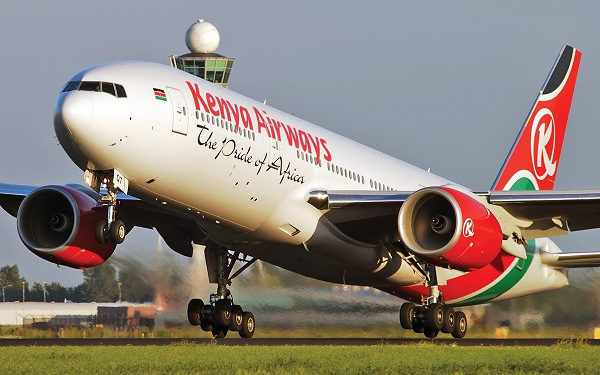
Kenya Airways, famously known as “The Pride of Africa,” has made a resounding comeback on the Nairobi Securities Exchange (NSE). After a five-year suspension, the Kenya Airways shares resumed trading on January 5, 2025. Within just eight days, the share price doubled, grabbing headlines and signaling a remarkable recovery for the national carrier. This historic rise reflects not just investor confidence but also optimism about the airline’s financial turnaround and future prospects.
Kenya Airways: A Brief History
Kenya Airways, established in 1977 following the breakup of the East African Airways Corporation, is one of Africa’s leading airlines. It operates a fleet of modern aircraft and serves both domestic and international destinations. Over the years, the airline has been a key player in connecting Africa to the world, earning its reputation as a flagship carrier.
However, the past decade has been tumultuous for Kenya Airways. Persistent losses, mounting debt, and stiff competition from regional airlines like Ethiopian Airlines and South African Airways left the airline struggling to stay afloat. The challenges were further compounded by the COVID-19 pandemic, which decimated the global aviation industry.
Why Were Kenya Airways Shares Suspended?
In July 2020, trading in Kenya Airways shares was suspended on the NSE. This was a strategic move following the Kenyan government’s proposal to renationalize the airline to stabilize its finances and operations. At the time, the airline was grappling with a debt crisis and operational inefficiencies.
The suspension aimed to protect investors from potential losses as the government explored options to secure the airline’s future. However, the renationalization plan was eventually shelved, leading to the airline’s return to the stock market.
Resumption of Trading: A New Chapter
On January 5, 2025, Kenya Airways resumed trading on the NSE. This marked the beginning of a new chapter for the airline, with investors eagerly anticipating its performance. The initial reaction was overwhelmingly positive, with the stock price surging by 9.88% on the first day of trading, closing at KSh 4.45 from its pre-suspension price of KSh 3.42.
The Eight-Day Rally: Key Drivers of Growth
Within just eight days, Kenya Airways’ stock price doubled, reflecting a 100% increase. The following factors contributed to this remarkable rally:
1. Improved Financial Performance
Kenya Airways reported a net profit of KSh 513 million in the first half of 2024, marking its first profit in over a decade. This financial turnaround restored investor confidence and highlighted the effectiveness of the airline’s restructuring efforts.
2. Strategic Initiatives Under Project Kifaru
Under the leadership of Chairman Michael Joseph, the airline launched Project Kifaru, a comprehensive restructuring plan aimed at reducing operational costs, increasing efficiency, and improving customer experience. This strategy has positioned the airline for sustainable growth.
3. Abandonment of Renationalization Plans
The government’s decision to withdraw the renationalization proposal reassured investors about the airline’s independence and commitment to maintaining a public listing.
4. Favorable Market Sentiment
The resumption of trading coincided with a bullish phase in the NSE, further fueling investor interest. Additionally, the aviation industry’s recovery post-pandemic has created a positive outlook for airlines globally.
5. Strategic Partnerships
Kenya Airways’ partnerships with global airlines, such as its joint venture with Delta Air Lines, have strengthened its market position and opened new revenue streams.
Investor Sentiment and Market Implications
The doubling of Kenya Airways’ stock price has generated significant interest among retail and institutional investors. This surge is a testament to the market’s confidence in the airline’s recovery and growth potential.
For the broader market, the rally underscores the importance of strategic turnarounds in reviving distressed companies. It also highlights the role of investor optimism in driving stock performance, even in industries fraught with challenges.
Challenges Ahead
While the recent stock performance is encouraging, Kenya Airways faces several challenges that could impact its long-term success:
- Debt Burden
The airline’s debt remains a pressing issue. As of 2024, Kenya Airways’ total liabilities stood at KSh 130 billion, a significant portion of which is owed to banks and aircraft lessors. - High Operating Costs
Fluctuating fuel prices and rising maintenance costs pose ongoing challenges for the airline’s profitability. - Competition
Regional competitors, including Ethiopian Airlines and RwandAir, continue to dominate the African aviation market, offering stiff competition to Kenya Airways. - Global Economic Uncertainty
Economic factors such as inflation, exchange rate volatility, and geopolitical tensions could affect the airline’s operations and financial performance.
Strategic Plans for Sustainable Growth
Kenya Airways has outlined several strategies to ensure sustained growth:
- Fleet Modernization: The airline plans to upgrade its fleet to improve fuel efficiency and reduce maintenance costs.
- Digital Transformation: Investments in technology to enhance operational efficiency and customer experience are underway.
- Route Expansion: Kenya Airways aims to expand its network to tap into high-growth markets in Asia and the Middle East.
- Sustainability Initiatives: The airline is committed to reducing its carbon footprint through green initiatives, aligning with global aviation trends.
What Does This Mean for Investors?
For investors, the recent surge in Kenya Airways’ stock presents a unique opportunity. However, it is essential to approach this investment with caution. While the airline’s turnaround efforts are promising, the aviation industry remains inherently volatile.
Investors should consider the following before making investment decisions:
- Long-Term Viability: Assess the airline’s ability to sustain profitability amid market challenges.
- Risk Factors: Evaluate the potential risks, including debt levels and operational challenges.
- Market Trends: Monitor global and regional aviation trends to gauge future demand for air travel.
The doubling of Kenya Airways’ stock price within eight days of resuming trading on the NSE is a significant milestone for the airline. It reflects renewed investor confidence, a positive market outlook, and the effectiveness of its strategic initiatives.
However, the airline must address its lingering challenges to sustain this momentum and build a stable foundation for long-term growth. For investors, Kenya Airways offers both opportunities and risks, making thorough due diligence essential before making investment decisions.
As “The Pride of Africa” charts its path to recovery, all eyes will be on its performance in the coming quarters.
Explore: Why Invest In Ziidi Money Market Fund (MMF) in 2025
Frequently Asked Questions (FAQs)
Why were Kenya Airways shares suspended on the NSE?
Kenya Airways’ shares were suspended on the Nairobi Securities Exchange (NSE) in July 2020 due to a government proposal to renationalize the airline. The suspension was aimed at protecting investors while the government explored restructuring options to stabilize the airline’s operations during a challenging financial period.
When did Kenya Airways resume trading on the NSE?
Kenya Airways resumed trading on the NSE on January 5, 2025, after a five-year suspension. The resumption marked a new phase for the airline, following significant financial and operational restructuring efforts.
What caused Kenya Airways’ stock price to double in eight days?
The stock price surged by 100% within eight days due to several factors, including improved financial performance, the abandonment of renationalization plans, positive investor sentiment, and strategic initiatives under the airline’s restructuring plan, Project Kifaru.
What is Project Kifaru?
Project Kifaru is Kenya Airways’ comprehensive restructuring initiative aimed at reducing operational costs, improving efficiency, enhancing customer experience, and ensuring long-term profitability. It has been a key factor in the airline’s financial turnaround.
Is Kenya Airways profitable now?
Yes, Kenya Airways reported a net profit of KSh 513 million in the first half of 2024, marking its first profit in over a decade. This positive performance is a result of the airline’s strategic restructuring efforts and operational improvements.
What are the main challenges facing Kenya Airways?
Kenya Airways shares faces challenges such as a significant debt burden, high operating costs, competition from regional airlines, and global economic uncertainties, including fluctuating fuel prices and exchange rate volatility.
What does the future hold for Kenya Airways stock?
While the recent stock surge is promising, the long-term performance of Kenya Airways will depend on its ability to address its challenges, sustain profitability, and adapt to market dynamics. Investors should monitor its financial results, debt management, and strategic initiatives closely.
Is it a good time to invest in Kenya Airways?
Investing in Kenya Airways presents opportunities but also comes with risks. Potential investors should consider the airline’s turnaround progress, debt levels, and the competitive aviation market. Conducting thorough research and seeking professional financial advice is recommended.
How has the aviation industry’s recovery impacted Kenya Airways?
The global aviation industry’s recovery post-pandemic has positively impacted Kenya Airways, boosting passenger demand and revenues. This has contributed to improved financial performance and renewed investor confidence in the airline.
What steps is Kenya Airways taking to ensure sustainable growth?
Kenya Airways is focusing on fleet modernization, digital transformation, route expansion into high-growth markets, and sustainability initiatives to align with global aviation trends and reduce its carbon footprint.





